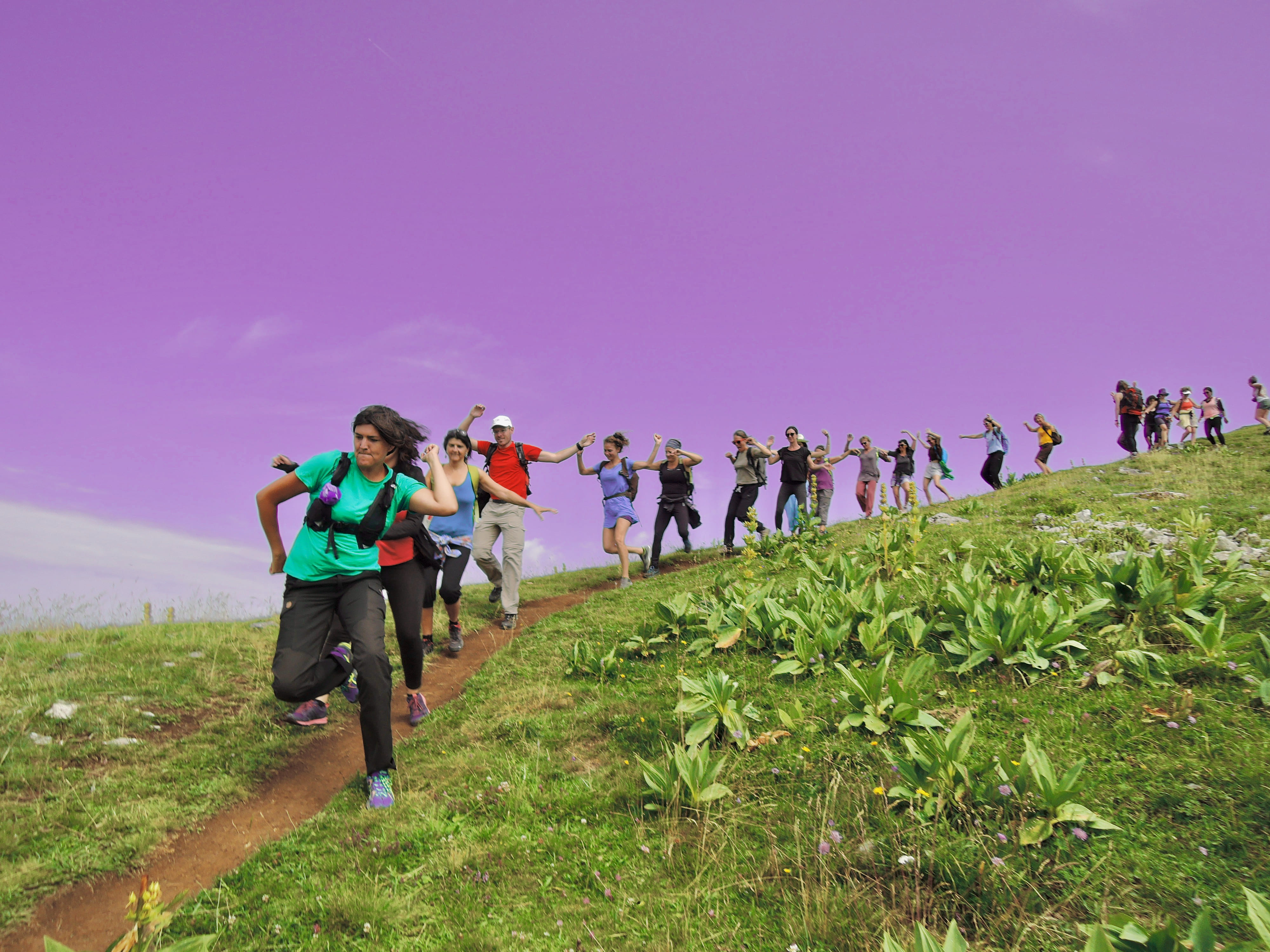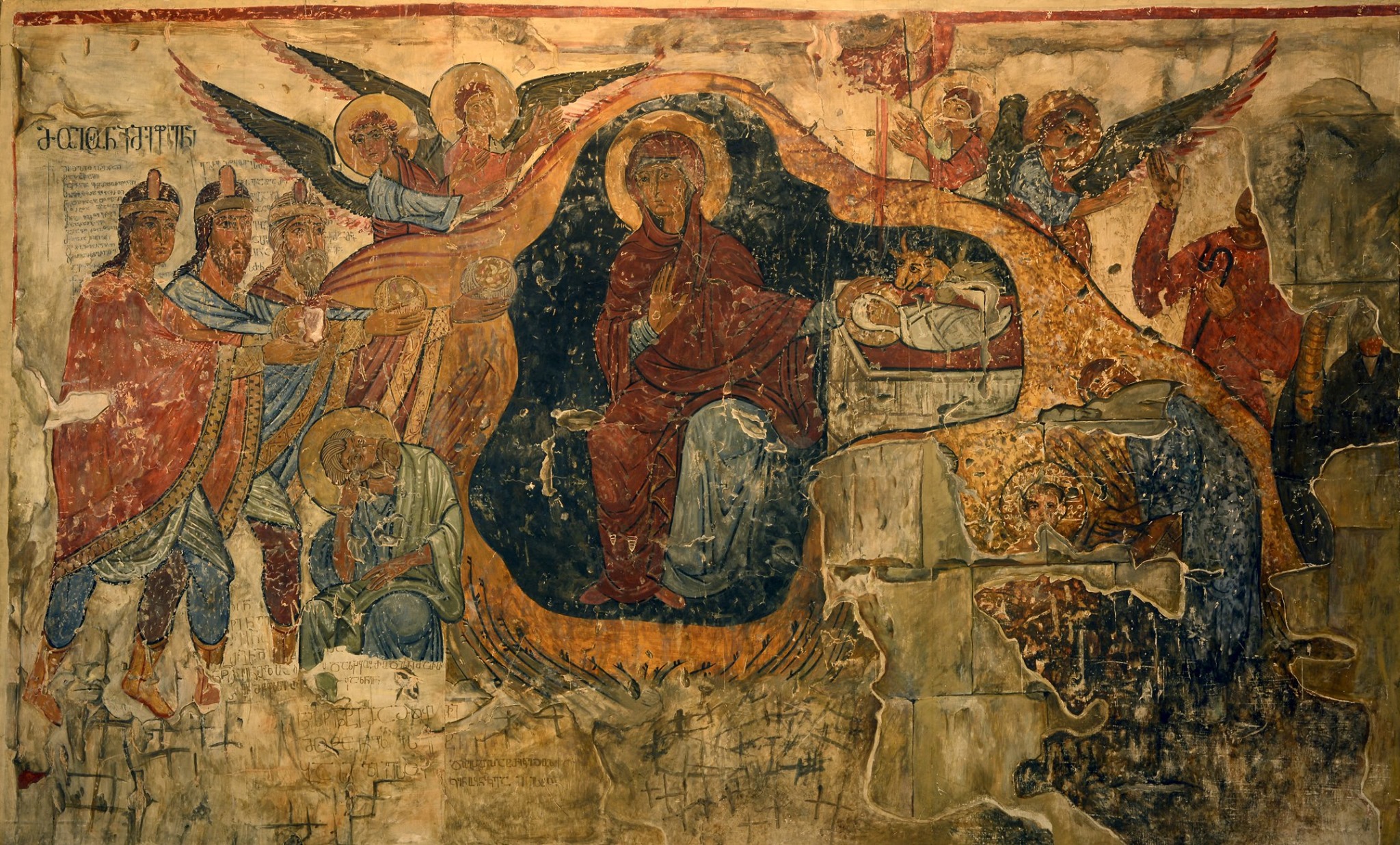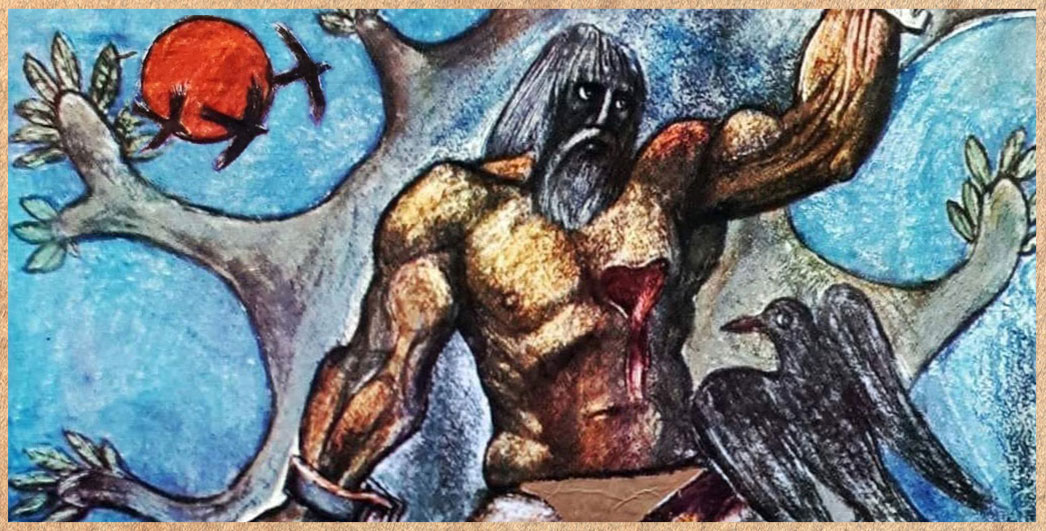From TREK DANSE to HOSPITAL NATURE
Birth of a Practice
Following several trips, then a long wandering walk in the company of artist friends and donkeys for three months in Spain, my life led me to have to stop my nomadism. To compensate, I continued to explore the mountains close to my home in the south of France, while, little by little, bringing my latest personal discovery into play in the service of these explorations. My interest in dance was already very present in my life, especially when community trance practices appeared in the techno music revolution and its many alternative manifestations: rave parties, clubbing, after-parties, clandestine parties .... However, i came years later across the teaching of Julyen Hamilton under the concept of Instant Composition, followed by Contact Improvisation and other key encounters, like artists as Yvonne Rainer or Lisa Nelson. until I became a transmitter of these practices and began to mix them with my own walks. From then on, filled with the pleasure of what I was creating, I began to invite friends, performers, dancers and propose them oral scores of walking or more static ones somatic activities—in which they were immersed in certain natural environments that I knew well and for which I could describe the geological formation, the history through the ages, or explain the origin of certain legends. As these proposals for days and micro-stays progressed, dance-improvisation became above all a relational vector with its environment, endowed with a potential for precision, revelation, and also joy and care, the effects and returns of which we shared together. I also learned that other artists had developed similar approaches (most recents (approcheas), coming from 3 choreographers or choreography teams. First, there was Anna Halprin, a famous choreographer long based in California, whose commitment I was subsequently able to understand thanks to some of her students and collaborators. There was also Christine Quoiraud, who, having studied Min Tanaka’s Body Weather training and pursued it in her own way, created the first dance-hikes. And, finally, there is the Tourist Agency group, led by Virginie Thomas and Mathias Poisson, with whom I began to work, after I had begun developing, in a free and personal way, what I called the TREK DANSE.

TreK Danse éco-somatic. Photo: Robin Decourcy
Trek Danse
The TREK DANSE is today a festive and inclusive walk. It creates a new rituals that changes with each of the immersions offered by guides that I invite according to the imagined routes I imagined. These allies could be choreographers, musicians, actors, naturalists, animal breeders. A practice inspired by post-modern dance and the history of trance and nomadism, this set of multi-sensory experiences is presented in the form of games, scores, and initiations. Different proprioceptive techniques such as empathic walks, murmurings, or occult explorations are proposed in resonance with the chosen landscapes. During the course, certain breaks allow participants to explore deeper perceptions, relationships, or compositions with the ecosystem around them. Aiming, in a broader way, to transpose poetic actions into the emotional body and the social body, TREK DANSE has opened up to immersive performances in which the public is taken into an enchanted scenario where reality and fiction are found to be strangely mixed. The atmosphere is respectful and caring, open to questions of gender, to our animality, to our impulses, to the varied states of consciousness and body.
After having created and explored TREK DANSE for more than ten years, without having initially chosen to make it a technique or even a performance, I am now taking the time to fully understand its issues and origins. Following interviews for books and dissertations discussing the relationship between dance and ecology,[1] I began to understand how much I am indebted to different artistic, philosophical, and therapeutic currents of thought and practice. This realization logically brings me to a new moment of intersection and change in my research. The TREK DANSE responded to a situation of inanity (non reactional), in the climate emergency. I moved the public directly into the biotope—that is, into the surrounding habitat—while also suggested that they experiment, through multi-sensational practices, with the conditions of migration over short periods of time. In this way, they evoke multiple ontological layers: our origins as hunter-gatherers (food self-sufficiency and permanent ecological adaptation), the histories of root and nomadic peoples, pursued and persecuted for the same reasons, progressing up to contemporary and future migratory eco-tragedies. TREK DANSE is an “outsider” art practice, of Out-dance, which was born as a mirror of this state of affairs of nomadism. This found a strong echo among allies, often body practitioners and professional dancers who went beyond their common framework of application or representation, and who were quickly joined by numerous “followers” of all stripes. Encouraged, challenged in its formal development by various art communities and institutions curious about these questions (associations, national scenes, choreographic and art centers), TREK DANSE has nevertheless remained confidential, known to initiates or trek dancers, given its relatively limited size (20, to 100 people), its duration of one or two days but above all because of the commitment it requires: risking yourself outside the room, the effort of walking, knowing to dance… in short several criteria that I still patiently foil (like more recently doing urban activations). Coming out of the Covid pandemic, institutions have seized the imperative to go beyond the usual programming frameworks to work in cooperation with stakeholders in rural areas and create more substantial events. Having had ample time to reflect on a number of these environmental and cultural factors during my yeares of practice, I am today directing my attention towards a stopover, a post-nomad camp, a sort of eco-topic station, which I am in the process of building under the name of HOSPITAL NATURE.

Trek Danse Le Semnoz. Photo: Robin Decourcy
Balls and Bandits
In the meantime, I have had the pleasure of creating new projects, among them BAL CONTACT. This project initiates and popularizes improvisational dance in an increasingly unbridled progressive trance. From deep relaxation to the most delicate transports, from solo to quartet, from ballroom dancing to Rave Party, the Contact Ball shakes up and revisits the traditional ball while redistributing the cards of the tenderness. No prior knowledge is required, and an attentive and playful focus is placed on the issues of consent. The public as an organism. Dance as a modus operandi, hence several sequences of participatory games which organize this festive ceremony. A motley orchestra first interprets the audience’s environment to become its magic potion and open the doors to an unimagined clearing: a somatic trance, an acoustic and multi-labial party. With variable geometry, each of the invited musicians is author-composers who renew the musical genres of the communities on which they have nourished themselves: folk, Fulani, tango, Mandingo, techno, country, tarantelle. Here they take the challenge of presenting some of their pieces, then improvising together, according to a global score, of elementary, phylogenetic and cosmogonic inspiration. Some of these musicians were introduced to me by the cult filmmaker Vincent Moon, who has directed, among other things, one of the largest catalogs of musical documentaries in the world, accessible through creative commons on the internet. First garnering notice by inspiring folk and rock artists—Arcade Fire, R.E.M, Beirut, Lhasa de Sela—to go outside, to play in the street, in parks or forests, he has found his way to new subjects, more exploratory and less Western in orientation. This has included all kinds of sound production, including experimental, traditional, religious, ritual, and shamanic music, and a more recent interest in dance, specificallythe new collective and ritual dances. Since then, Vincent and I have been working together on projects like BANDITS, an improvisation marathon. This is also the reason why I am visiting Georgia with him,to produce a film he is making in Svaneti about the Lipanali, a traditional festival dedicated to the souls of the dead, who are in the phase of losing or reinventing themselves.

BANDITS. Photo: Vincent Beaume
As for the BANDITS project, which brings us together to produce a feature film with filmmaker Bojina Panayotova, the improvisation marathon is in its second public activation. For several days a team of all-terrain performers and dancers wander in a defined territory: neighborhood, park, town, socio-professional space, village, landscape, etc. The athletic and artistic exploit begins with a party and music, under a banner. The public can follow and interact with the athletes costumed covered by numbered t-shirt (?), as well as attend their daily meeting on instant composition time. These hundreds of hours culminate in an event which is their arrival and return among us. A poetic and sensitive portrait of a social space—of its inhabitants, human and non-human—the BANDITS project is a proposal to infuse the carnival of reality that surrounds us. This project was born in Peru and Ecuador during an artistic residency and a meeting with Shuar shamans. It wishes to expose to the public the relational and psychological potentialities implied by new improvisation techniques as well as the rediscovery of ancient poetic and bodily practices. Also, its latest public proposal opened to the registration of around forty marathon runners. From then on, BANDITS is developing towards an ever more civic project, putting at the heart of daily life the biodiversity of our behaviors and our movements, sensitive, non-verbal, atypical, in dialogue with our main allies: people on the margins and disabled people, the elderly, children, and animals.

Bal Contact. Photo: Pénélope Marcadé
Acknowledgments and more about the author:
The Dance Trek was organized in numerous alternative settings, then supported and produced by various partners including: Le Bureau des Guides, L'Agence Touriste, Petites Planètes, FAI-AR, 1001 Spirales, La Folie Kilomètres, Le Bruit du Frigo , Mulhouse Festival, Escales Danse, CDCN Avignon, CDCN Grenoble, CCNC de Caen, Le Carreau du Temple, Théâtre de Grasse, Common Points - Scène Nationale de Cergy, Le 3 BIS F, Théâtre National de Bonlieu- Annecy, Nuit Blanche - Paris City Hall, FRAC PACA, PACA Regional Council, Vaucluse Departmental Council, DRAC PACA…
Robin Decourcy is a French author, choreographer and visual artist, creator of Trek Danse. Trained at Villa Arson and at the Beaux Arts in Mexico, his in situ practice has changed during his travels in Asia, Latin America and increasingly in South America. His meeting as an assistant or intern with the superheroes of Post-Modern Dance, Fluxus, Sound Poetry but also theater and literature led[2] him to integrate improvisation and score techniques into real time. His work is regularly presented in the form of exhibitions, pieces in festivals, art centers, theaters and national choreographic centers, such as Trek Danse for 10 years. Influenced by the techno, traditional and experimental scene, as well as the teaching of root peoples, Robin Decourcy applies different alternative relationships to our environment through large inclusive performances. Combining ethological and micro-political processes, his approach is the subject of conferences and publications, associated with a so-called “eco-somatic” art. To do this, he cooperates with numerous creators, street artists, dance artists, circus artists, composers, filmmakers as well as practitioners and researchers.
http://www.documentsdartistes.org/decourcy
[1] See, for instance, Marie Bardet, Joanne Clavel, and Isabelle Ginot, Écosomatiques: penser l’écologie depuis le geste (Montepellier: Éditions Deuxième Époque, 2019).
[2] Lisa Nelson, Julyen Hamilton, John Giorno, Yvonne Rainer, Paul Mac Carthy, Patrice Chéreau, JMG Le CLézio…




